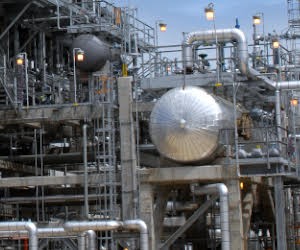
Issue:
The Plant saw a trend that their Recovery efficiency was dropping significantly. The plant employs a 3 stage SRU without a TGTU. The plant was planning to replace all their catalyst. The Reaction Furnace temperature was running at 1040°C.
Resolution:
Testing was done to this plant wherein samples were taken before and after each converter; feed samples were also tested. During testing, operations was asked to gather all necessary data from their DCS every 5 minutes. All major components were identified, including H2S, CO2, COS, CS2, Benzene, Toluene, Xylene and Ammonia.
Using the operating data gathered and testing results, a steady-state simulation was created to assist the engineer in identifying what is causing the SRU to decrease in recovery.
It was found out that there was Benzene and Toluene breaking through the Reaction Furnace and poisoning the first converter catalyst. The simulation was showing only 70% activity on the first converter which is an indication of deactivated catalyst. Temperature rise on the top thermocouple was low but the middle and bottom temperature was fine. This suggests that only the top portion of the bed was deactivated. Second and Third Converters were achieving 100% activity (fully active).
The plant was advised to replace the first 50% catalyst of the first converter. It was also suggested that minor modification on their Reaction Furnace (e.g. Checker Wall, Choke, Burner) would increase the temperature of the Reaction Furnace.
Testing was requested after the turnaround. The recovery efficiency was 98.95%, which is normal for a 3 stage SRU.







Leave a Reply
You must be logged in to post a comment.